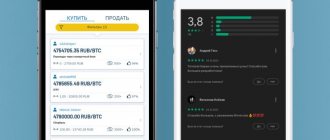Before we dive into what masternodes are, let's first understand what a node is. A node is essentially a computing device that serves a network. A smartphone, computer, or any other device that can receive, transmit, and contribute to the blockchain is considered a node.
A masternode, as the name suggests, is more than a node in terms of roles that a regular node does not have. A masternode is a computing device that hosts the entire blockchain ledger of a specific cryptocurrency. They incentivize node operators to perform the core functions of running a blockchain.
Masternodes emerged as a solution to the rising costs and technical difficulties associated with running a full node on a blockchain network. Due to cost and technical issues, running a node on a blockchain network usually results in fewer nodes and is not very profitable. Reducing the number of nodes will affect the efficiency of the blockchain, which can lead to network congestion and increased transaction processing time. Thus, masternodes serve as a kind of foundation for blockchain networks, providing a solution to these problems through their collateral system.
About node operators
Those who host a masternode on their computing device are known as node operators. The good news is that anyone can be a node operator to run masternodes. The goal is to achieve enough decentralization that no one person can control a significant portion of the masternodes.
For a masternode to operate, node operators must deposit a certain number of coins in their crypto wallet. They will remain in their cryptocurrency wallet for as long as the person operates the masternode. However, they require a minimum bet amount to participate. The exact amount staked will vary, and the frequency of block rewards will also vary depending on the specific cryptocurrency's masternode program. For example, the bet amount required by Dash is 1000 Dash coins. This amount is also known as collateral, which is stored in your cryptocurrency wallet in sync with the blockchain.
Providing coins is necessary to ensure that the node operator does not deceive or damage the system. This is done so that the node operator has something at stake and will therefore be careful when running the entire system so as not to be penalized for not doing so. If any fraud or corruption is discovered, a penalty of devaluation of HODLing will be imposed.
If this collateral is moved or spent, the masternode will cease to operate and payments to node operators will also cease. Or, if a masternode stops providing services to the blockchain network for more than an hour, it will be removed from the list until normal services are resumed. This encourages node operators to continuously offer efficient and reliable services to the network.
Thanks to this reward system for node operators, there is no need to worry about not having enough masternodes. Having so many servers running a full copy of the blockchain provides greater speed and efficiency. The greater the number of masternodes, the better and more secure the network will be.
What types of nodes are there?
Since we have touched on the topic of network nodes, let's look at what they are. Today, there are 4 types of nodes:
- full;
- lightweight;
- super;
- master.
The category of full nodes includes nodes of the Bitcoin network. They are independent of each other, and save all data on the cryptocurrency blockchain. Their dependence lies in the fact that full nodes operate independently.
Lightweight nodes have fewer powers. Their task is to store tables of contents (headings) of network blocks. They are completely dependent on full nodes.
We wrote about masternodes in the previous section and they have a variety - supernodes, which operate without a wallet and are the end point of the API. At the moment, this type of node is represented in the NEM cryptocurrency.
Advantages of a masternode
Masternode node operators enjoy benefits beyond the ability to directly contribute to the coin's ecosystem. That is, they will be rewarded with passive income, management rights and investment strategies.
Passive income
Owning a masternode opens up the opportunity for node operators to exponentially increase their passive income. They can earn passive income by performing ledger functions. This includes creating instant transactions and private transactions. Instant transactions are also known as "InstantSend" and private transactions are also known as "PrivateSend".
Right to control
Node operators also have the advantage of being part of the success of the network by participating in network decisions, including management. They are allowed to vote on various decisions and proposals.
Investment Strategies
Masternodes provide predictable profits to node operators as an incentive to launch the network. This also means that node operators have the opportunity to hedge their risk of investing in crypto assets, which have greater volatility.
What is a node?
Noda in English means node. In the Bitcoin network, a node is every computer that is connected to the network and uses a peer-to-peer protocol to synchronize with other participants. The combination of these nodes ensures the smooth operation of the cryptocurrency blockchain.
Computers connected to the Bitcoin blockchain exchange information, thereby confirming transactions in the Bitcoin network. If at least one of the nodes detects a violation in the transaction information, it rejects it.
Each node in the Bitcoin network has equal rights, thereby achieving decentralization and security. Over time, some altcoins implemented other principles for forming network nodes. For example, the developer of the DASH cryptocurrency Evan Duffield introduced the concept of a master node (Masternode) and implemented it in his project.
Masternode and other ways to earn cryptocurrency
Passive income earned through a masternode is very different from cryptocurrency mining due to several factors. Firstly, the difference in energy. The energy required to operate masternodes is less compared to operating cryptocurrency mining. Node operators also require less hardware and therefore have lower computing costs compared to crypto miners.
Secondly, using a masternode is a more passive type of investment compared to trading. This may appeal more to those who may not have the time to engage in day trading, and a masternode may be a choice for increasing their cryptocurrency holdings.
While masternodes offer cryptocurrency savings accounts that will earn money over time, they will inevitably still be vulnerable to market volatility. Therefore, the role of node operators is to ensure that the blockchain network operates optimally and functions efficiently. While masternodes are not exempt from market volatility, it is also true that node operators enjoy lower volatility compared to crypto traders due to regular payouts and long-term earning potential.
How much can you earn by running a masternode?
Node operators can earn between 5% and 20% of the reward per block. This depends on the level of volatility in the cryptocurrency market, as well as several factors. Differences include the following factors:
- Cryptocurrency type
- The value of a coin over time (whether it appreciates or depreciates)
- Payout frequency
- Basic blockchain projects (are they successful)
- Your bet amount
- State of the cryptocurrency market (bullish or bearish)
Node operators' earnings will also depend on the frequency of block rewards. While some coins are issued once per day, some may be issued multiple times per day.
Dash and masternode
Dash was the first virtual currency to adopt the masternode model. The name "Dash" comes from the words "Digital Cash". Dash, formerly known as Darkcoin or Xcoin, is a cryptocurrency that was created as a fork of Bitcoin to satisfy users' need for faster and more private transactions. Forking Bitcoin simply means that existing code has been copied from Bitcoin and then improved to solve problems that users are facing. Thus, Dash offers faster confirmation times as well as better privacy features than Bitcoin with its more anonymous services.
The network on which Dash operates is the masternode. The masternode provides a decentralized governance platform for Dash. Masternodes have a special job. This includes creating instant transactions and private transactions. Instant transactions are also known as "InstantSend". Thanks to the InstantSend feature, the masternode makes it easy to block transactions. Private transactions are also known as "PrivateSend". Since they are private, they hide the fact that they are sending money. The masternode coordinates the mixing of coins using the PrivateSend function.
PrivateSend, formerly known as DarkSend, is a sharing mixing method. This is also known as coin mixing. This method protects Dash users by allowing transactions between users to be anonymized. CoinJoin technology requires multiple parties to sign an agreement together to mix their coins when participating in separate transactions. This strategy makes it difficult for outside parties to determine which party is making a particular transaction. At least three users will be merged into their transactions to hide the trail of funds.
Introduction
In general, I described my attitude towards cryptocurrencies in a separate article. I'm just providing this for reference for those who might be curious. Today we will consider exclusively the technical side of the process.
The installation of a cryptocurrency node itself is not very difficult. You need to run a few simple commands in the server console. I will share some of my thoughts on this matter, since I have studied this topic a lot and gained some experience.
The biggest problem in this matter is suitable hardware. Low-cost virtual machines don’t support cryptocurrency nodes at all. And currencies such as ether or bitcoin also require a very large disk space - 300-600 GB. You need a dedicated server in the low or mid-price segment. It's best to buy in Europe, it's cheaper there. My link will provide servers with Russian-language support. If you don’t need it, you can buy it directly from Hetzner or somewhere else, it will be cheaper. A raid controller is not required there, since the node will not store any unique information. In the event of failure, it can be raised without problems on a new hardware.
Requirements for masternodes
First, you need to keep 1000 Dash as collateral. This may be the hardest part. Dash can be obtained from exchanges such as LiveCoin, Kraken and Poloniex. Secondly, the next step is to have a server or VPS running Linux that can provide 24/7 uptime.
Third, you will need a dedicated IP address, which will come with the server. Fourth, here are the minimum hardware requirements (for Dash version 0.14 and higher):
| Minimum Requirements | Optimal | |
| CPU | 1×1 GHz | 1×2 GHz |
| RAM | 2 GB + 2 GB swap | 4 GB + 4 GB swap |
| Net | 400 GB per month | 1 TB per month |
| Disk | 40 GB | 60 GB |
Finally, be prepared to take the time to set up. However, the good thing is that while some masternodes require complex setup, Dash's tools have made the process easy. While these are the requirements for Dash, they are essentially the same as for any other cryptocurrency masternode.
A little technical knowledge
To run a masternode, you need to configure some files and write parameters to these configuration files. Additionally, you may need knowledge of running a Linux server, so basic knowledge of computer technology is still required.
Application of masternodes
- Initially, Dash developed the concept of working with masternodes to implement the following services:
- InstaSend: masternodes can be adapted for almost instant transactions
- Dash Evolution: Decentralized Payment Processor (Decentralized PayPal)
- PrivateSend: Masternode allows users to make and receive anonymous payments.
Invest in a masternode without being a node operator
To invest in a masternode, you can become a node operator and receive the associated passive income. However, if you don't want to host a server and maintain the network function, don't worry because you can still be an investor in masternode coins.
If you're not sure where to start, it's best to choose which masternode coin you want to invest in by getting the coin data from an aggregator website like masternodes.online. You can then simply search for that coin on cryptocurrency exchanges, register and buy it.
Another way to invest in masternodes is to do so through a third-party masternode fund. Such a fund will comprise a portfolio of the most efficient nodes. However, they are relatively new, which also means they are riskier.
Virtual private servers (VPS) and their use with nodes
Whether you decide to use a virtual private server or not depends on your personal preferences.
Whether you decide to run a masternode, a Lightning node, or even a cold coin storage node, a VPS is beneficial because you pay a small fee in exchange for protection from DDoS attacks without requiring you to purchase any hardware or worrying about bandwidth.
On the other hand, if you do not take sufficient security measures, you risk having your server hacked and your funds stolen if you store your coins in these wallets.
These are the basics, but we would recommend looking into VPS servers in detail before deciding whether to buy one or not.
Finding a suitable masternode
As suggested above, we recommend that you visit aggregator websites that provide information about the various cryptocurrency masternodes available. This allows you to compare coins. Referring to masternodes.online, here are the terms and their meaning:
- Coin : the name of the masternode coins.
- Price : The current price of the masternode coin available on cryptocurrency exchanges.
- Change : percentage change in the price of the coin over the last 24 hours (green - increase, red - decrease).
- Volume : The absolute number of coins traded in the last 24 hours, in USD.
- Market capitalization : the product of the number of coins in circulation and the price of the coin.
- ROI : annual return on investment.
- Nodes : The total number of nodes running on a particular network.
- #required : The stake amount required to run the node.
- Masternode costs : the minimum amount of investment required to run a node (the product of the number of coins and the current price).
Besides looking at the basic details of each masternode, there are several factors to consider when making your decision. These factors are liquidity, trend, number of nodes, and the team behind the coin.
Liquidity
Liquidity is one of the most important factors to pay attention to. This is because liquidity and volatility are highly correlated. Generally, the higher the liquidity, the more reliable the market. This is because an illiquid market can easily become unstable. Therefore, it is important to check how many exchanges actually offer a masternode. You should also take it a step further to check which exchanges offer them and do some research on those exchanges and their reliability history. It should also be noted that when masternodes do not have market capitalization information, this can be a warning sign of low liquidity.
Number of nodes
The number of nodes available gives an idea of the longevity of the project. Typically, the longer a project runs, the more nodes it contains. However, there are times when nodes are also inactive because their operators are leaving them, so this may not be your only determining factor.
The team behind the coin
To get more information, it's helpful to look at the team behind the coin as well as the project behind it. For example, reading their website, the coin's charter history, and even community reviews.
Trend
It is also important to monitor the price trend. This is because if a downtrend is expected, a smart strategy is to wait and watch the price fall before buying your share.
Final Thoughts
To summarize, a masternode is a computing device that hosts the entire blockchain ledger of a particular cryptocurrency. Masternodes incentivize node operators to perform the core functions of running a blockchain. Special functions performed include enhancing transaction privacy, performing instant transactions, and participating in governance and voting.
Masternodes have come a long way. Back in 2022, there was a bit of a bad rap when masternodes were linked to certain scams. However, they have now become even stronger thanks to the emergence of more mature coins and more knowledgeable crypto investors. Interest in masternodes is sure to increase in the coming years, and we expect masternodes to expand to play different roles, for example in the cryptocurrency market. We look forward to the possibilities and hope this article has helped you see that too.
Igor Titov
Economist, financial analyst, trader, investor. Personal interests – finance, trading, cryptocurrencies and investing.









